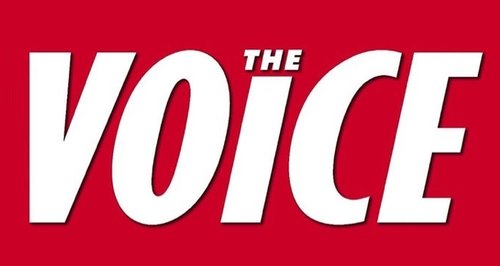MIGRAIN: Representation theory - David Gauntlett & Collective Identity
Read Media Factsheet #72 on Collective Identity and answer the following questions to complete our introductory work on collective identity and David Gauntlett:
1) What is collective identity? Write your own definition in as close to 50 words as possible.
When a group of people or society share similar views, values, traditions, ideologies and a similar understanding of the world around them, we say they have 'collective identity'. An example would be - British people have a collective identity of democracy and freedom in Britain.
2) Complete the task on the factsheet (page 1) - write a list of as many things as you can that represent Britain. What do they have in common? Have you represented the whole of Britain or just one aspect/viewpoint?
3) How does James May's Top Toys offer a nostalgic representation of Britain?
The programme dwells upon and explores aspects of British history. For example- the history of the race track, the history of Scalextric and wider British issues such as the decline of manufacturing jobs in northern Britain and a sense of regret that many of these toys are now manufactured abroad, such as Meccano in France.
The presenter, James May, is 48 years old and, as such, the programme attracts an older demographic of people. This is reflected in the choice of toys which James May examines. Airfix, Meccano, Plasticine, Lego, Scalextric and Hornby are all toys of his youth and that of the targeted demographic of 30+ males. Being targeted at a slightly older audience means that the toys also become metaphors or the sense of Britishness that May explores, that of ‘nostalgia’ or a feeling / longing for the past where life was perceived to be simpler.
4) How has new technology changed collective identity?
New technology has meant that individuals are becoming more active and engaging in creating their own content. From videos on YouTube, to content on blogs, there are endless possibilities. Henry Jenkins (2006) calls this new collective identity an 'interpretive community' and labels fans as ‘cultural producers’ who are now actively using the media to create new forms of identity, using the text as inspiration.
5) What phrase does David Gauntlett (2008) use to describe this new focus on identity?
The 'Make and Connect Agenda'
6) What does Gauntlett suggest about creativity and identity?
Gauntlett argues that there is a shift from a ‘sit-back-and-be told culture’ to a ‘making and- doing culture’. Individuals are now harnessing their creativity which will ultimately change how collective identity is formed.
7) How does the Shaun of the Dead Facebook group provide an example of Henry Jenkins' theory of interpretive communities online?
 The Shaun of the Dead Facebook group is a group of people who all shared the same experience from watching the film. An example is ‘I learned the word exacerbate from Shaun of the Dead’- this group has 701 members! This is an example of interpretive communities because this group of individuals have all interpreted the same thing and, so, now they feel that they can identify with each other. Consequently, they have collective identity.
The Shaun of the Dead Facebook group is a group of people who all shared the same experience from watching the film. An example is ‘I learned the word exacerbate from Shaun of the Dead’- this group has 701 members! This is an example of interpretive communities because this group of individuals have all interpreted the same thing and, so, now they feel that they can identify with each other. Consequently, they have collective identity.
1) What is collective identity? Write your own definition in as close to 50 words as possible.
When a group of people or society share similar views, values, traditions, ideologies and a similar understanding of the world around them, we say they have 'collective identity'. An example would be - British people have a collective identity of democracy and freedom in Britain.
2) Complete the task on the factsheet (page 1) - write a list of as many things as you can that represent Britain. What do they have in common? Have you represented the whole of Britain or just one aspect/viewpoint?
- Unity
- Diversity
- Fredom
- Trains & buses
- Queen Elizabeth
- Fish & Chips
- Traditional buildings (Big Ben, Buckingham Palace, etc.)
- Pounds
- River Thames
- The BBC
- Harry Potter
- Rain

They are common in the fact that most of these things are unique to Britain and it is what people outside of Britain also associate us with.
I think that I have mainly represented London rather than the whole of Britain. Perhaps this is because I live in London so I am more aware of how London represents Britain.
3) How does James May's Top Toys offer a nostalgic representation of Britain?
The programme dwells upon and explores aspects of British history. For example- the history of the race track, the history of Scalextric and wider British issues such as the decline of manufacturing jobs in northern Britain and a sense of regret that many of these toys are now manufactured abroad, such as Meccano in France.
The presenter, James May, is 48 years old and, as such, the programme attracts an older demographic of people. This is reflected in the choice of toys which James May examines. Airfix, Meccano, Plasticine, Lego, Scalextric and Hornby are all toys of his youth and that of the targeted demographic of 30+ males. Being targeted at a slightly older audience means that the toys also become metaphors or the sense of Britishness that May explores, that of ‘nostalgia’ or a feeling / longing for the past where life was perceived to be simpler.
4) How has new technology changed collective identity?
New technology has meant that individuals are becoming more active and engaging in creating their own content. From videos on YouTube, to content on blogs, there are endless possibilities. Henry Jenkins (2006) calls this new collective identity an 'interpretive community' and labels fans as ‘cultural producers’ who are now actively using the media to create new forms of identity, using the text as inspiration.
5) What phrase does David Gauntlett (2008) use to describe this new focus on identity?
The 'Make and Connect Agenda'
6) What does Gauntlett suggest about creativity and identity?
Gauntlett argues that there is a shift from a ‘sit-back-and-be told culture’ to a ‘making and- doing culture’. Individuals are now harnessing their creativity which will ultimately change how collective identity is formed.
7) How does the Shaun of the Dead Facebook group provide an example of Henry Jenkins' theory of interpretive communities online?
 The Shaun of the Dead Facebook group is a group of people who all shared the same experience from watching the film. An example is ‘I learned the word exacerbate from Shaun of the Dead’- this group has 701 members! This is an example of interpretive communities because this group of individuals have all interpreted the same thing and, so, now they feel that they can identify with each other. Consequently, they have collective identity.
The Shaun of the Dead Facebook group is a group of people who all shared the same experience from watching the film. An example is ‘I learned the word exacerbate from Shaun of the Dead’- this group has 701 members! This is an example of interpretive communities because this group of individuals have all interpreted the same thing and, so, now they feel that they can identify with each other. Consequently, they have collective identity.


Comments
Post a Comment